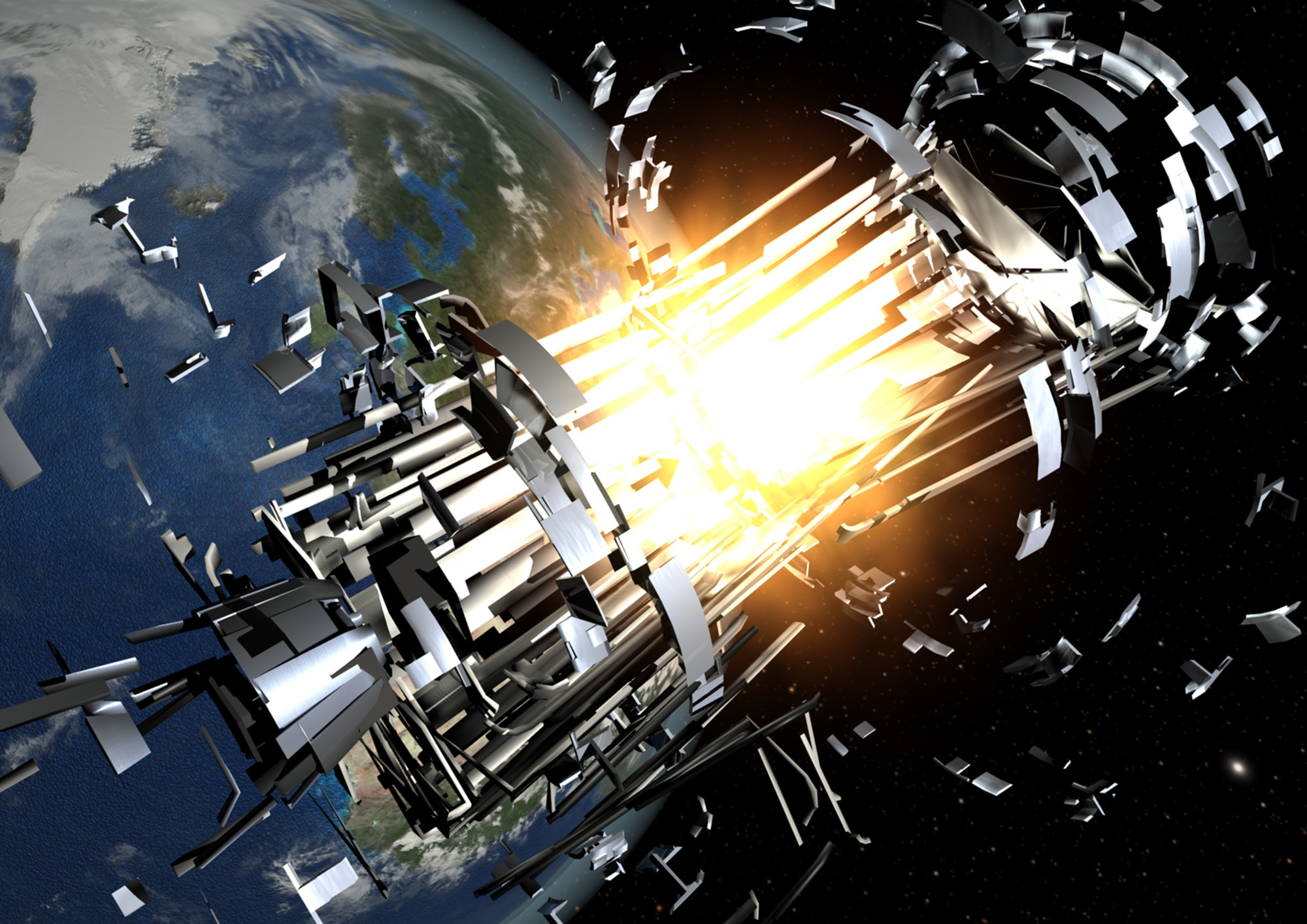The moon, Mars and space junk: World space agency heads outline grand plans, but also concerns
The moon, space sustainability, asteroids and more are being discussed at a major conference in Milan.

MILAN — Leaders of major space agencies stated grand plans for the near future at a major congress here in northern Italy, while noting concerns regarding Earth and the space environment.
Representatives of the European Space Agency (ESA), NASA, the Japan Aerospace Exploration Agency (JAXA), Indian Space Research Organization (ISRO), Canadian Space Agency (CSA) and China National Space Administration took turns on stage Sunday (Oct. 14) at the 2024 International Astronautical Congress (IAC) here.
Head of ESA Josef Aschbacher stated that his agency had garnered more than 100 signatories to its Zero Debris Charters, which sets out principles for space debris mitigation.
Aschbacher also discussed the Hera spacecraft, which launched last week and is now on its way to the asteroid Dimorphos, the target smashed by NASA's DART asteroid deflection test two years ago.
Related: Kessler Syndrome and the space debris problem
"Our question is, in terms of planetary safety and defense, what would we need to do in order to help our planet, to help humankind not to be impacted by such an asteroid?" Aschbacher said.
Looking beyond this, Aschbacher said that ESA will also be launching the Ramses mission as part of its planetary defense initiatives. This will be a stripped-down version of the Hera spacecraft that will be sent to study the near-Earth asteroid Apophis, which is due to make a close approach to Earth on April 13, 2029.
Breaking space news, the latest updates on rocket launches, skywatching events and more!
NASA Administrator Bill Nelson took his turn to highlight the successful SpaceX Starship flight and booster landing test a day earlier, while adding that the agency is preparing for its return to the moon.
"We're going to a different part of the moon in a different way, with new partners in order to learn how to live in that environment, how to create, how to invent, how to do all of the things that we have to do to go all the way to Mars," Nelson said.
He added that the crewed Artemis 2 mission is scheduled for September next year, with the Artemis 3 landing a year later, in late 2026. However, earlier reports suggest these timelines may slip.
Nelson also received applause for his reflection on his space shuttle mission in 1986. "As I orbited the Earth, I did not see religious division, I did not see racial division, and I did not see political division. What I saw as I orbited the Earth was that we are all in this together. We are all citizens of planet Earth," Nelson said.
JAXA's Hiroshi Yamakawa followed, stating that the United Arab Emirates recently signed an agreement to launch its ambitious asteroid mission on Japan's new H3 rocket. After noting the country's success earlier this year with the SLIM lunar lander, Yamakawa said JAXA is working together on the LUPEX lunar south pole mission with ISRO.
He also stated that the agency is thinking about its moves to follow the retirement of the International Space Station. "We are thinking about how to collaborate with commercial partners for moving on to the next stage," Yamakawa said.
ISRO is also thinking about space stations, according to agency chairman S. Somanath. He stated that the agency is planning an uncrewed flight test of its Gaganyaan human spaceflight system later this year. Two further uncrewed tests will follow next year. These will be "leading to the crore mission by 2026. That's our timeline now," Somanath said.
India is also working on the Chandrayaan 4 moon sample return mission and a Venus mission, in which ISRO is also looking at going down to the Venusian surface. Beyond Gaganyaan, ISRO is also aiming to launch the first module for a space station by 2028.
Back to North America, and Canada will be sending an astronaut on the Artemis 2 mission around the moon, CSA's Lisa Campbell told the audience. But there were also more Earth-bound concerns driving its space efforts.
"In Canada, we're fortunate to have a massive country with a relatively small population and a varied landscape of coasts, mountains, plains, forests, thousands of lakes and rivers. But each of these has a delicate ecosystem, and a stunning biodiversity we must protect," said Campbell.
"The emergency is real. And we recognize that satellites, with their unique perspective, are the best tools. If you're serious about managing climate change, you need your eyes in the sky," she added.
Echoing the concerns of Aschbacher on debris, she also talked about protecting the space environment. "We're going to have a reckoning soon when it comes to space sustainability. We've created a huge problem for ourselves, and it's going to make it difficult to use space infrastructure, and it's urgent," Campbell said.
Finally, Li Guoping, chief engineer at CNSA, took to the stage with a small sample of materials collected from the far side of the moon by China's Chang'e 6 mission earlier this year. And the nation's lunar plans do not stop there.
Li, speaking through an interpreter, stated that the next Chang'e mission will be Chang'e 7 in 2026, heading to the lunar south pole to seek water ice. The Chang'e 8 mission, in part to test in-situ resource utilization, will also head to the south pole, in 2028. China is also targeting a crewed mission to the lunar surface by 2030. It is also attracting partners for its International Lunar Research Station, which is China's answer to Artemis. "Up to now, around 15 countries and two international organizations are signed up," Li said.
Beyond the moon, China will launch the Tianwen 2 mission next year to sample a near-Earth asteroid. Following this, an audacious Mars sample return mission, Tianwen 3, is planned for launch in 2028. Li revealed that there is 55 pounds (25 kilograms) of payload space on the mission orbiter for international cooperation, and another 11 pounds (5 kg) available on the surface spacecraft. Following this will be Tianwen 4, targeting the Jupiter system, launching in 2030.
The IAC in Milan is the 75th edition of the annual congress, which brings together space agencies, astronauts, scientists, researchers, industry and press. This year's event attracted just under 11,000 participants, International Astronautical Federation president Clay Mowry stated during the opening ceremony on Sunday.

Andrew is a freelance space journalist with a focus on reporting on China's rapidly growing space sector. He began writing for Space.com in 2019 and writes for SpaceNews, IEEE Spectrum, National Geographic, Sky & Telescope, New Scientist and others. Andrew first caught the space bug when, as a youngster, he saw Voyager images of other worlds in our solar system for the first time. Away from space, Andrew enjoys trail running in the forests of Finland. You can follow him on Twitter @AJ_FI.
